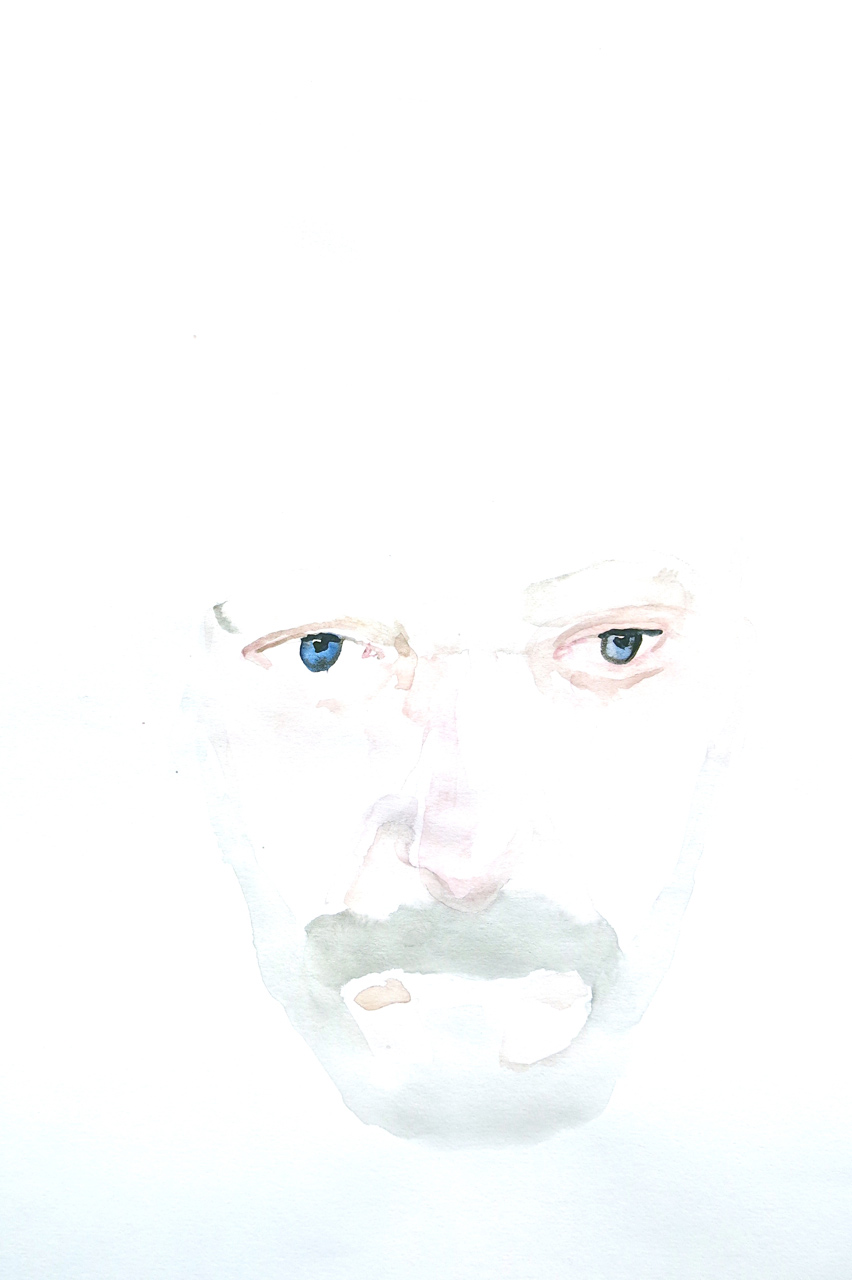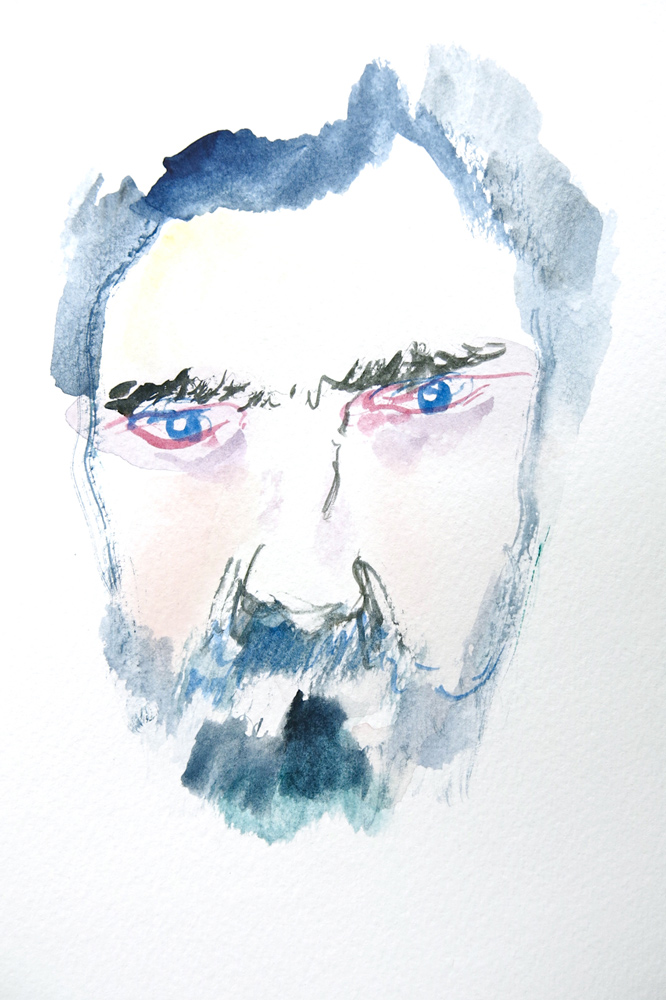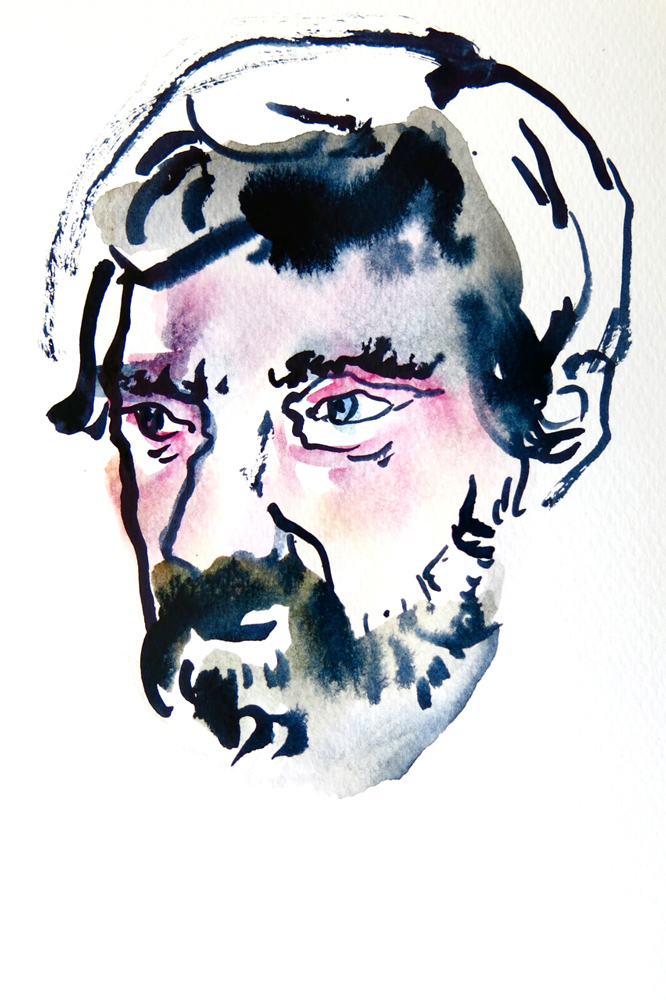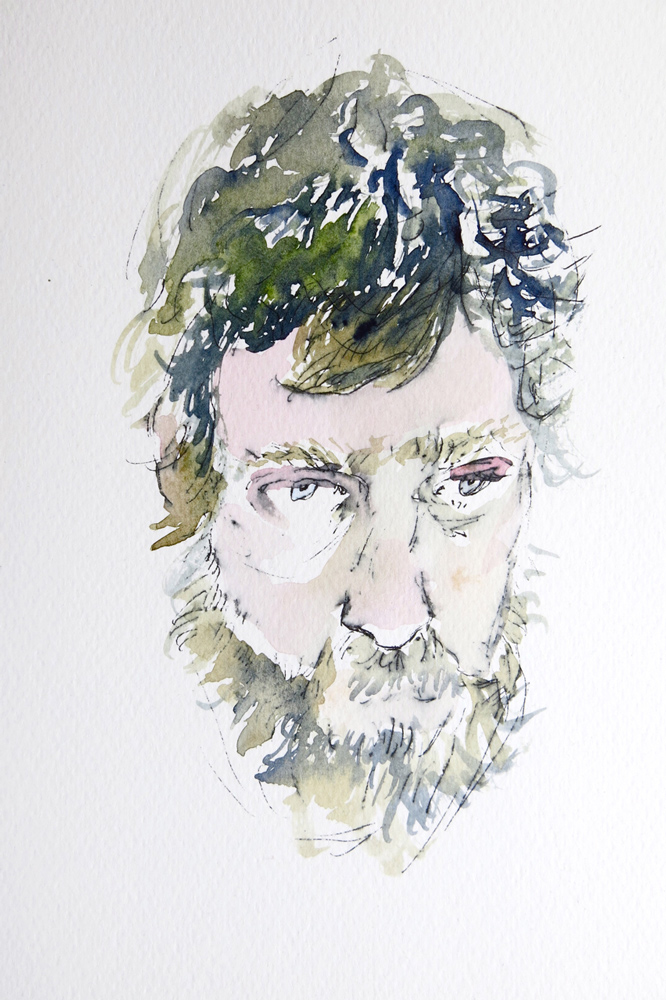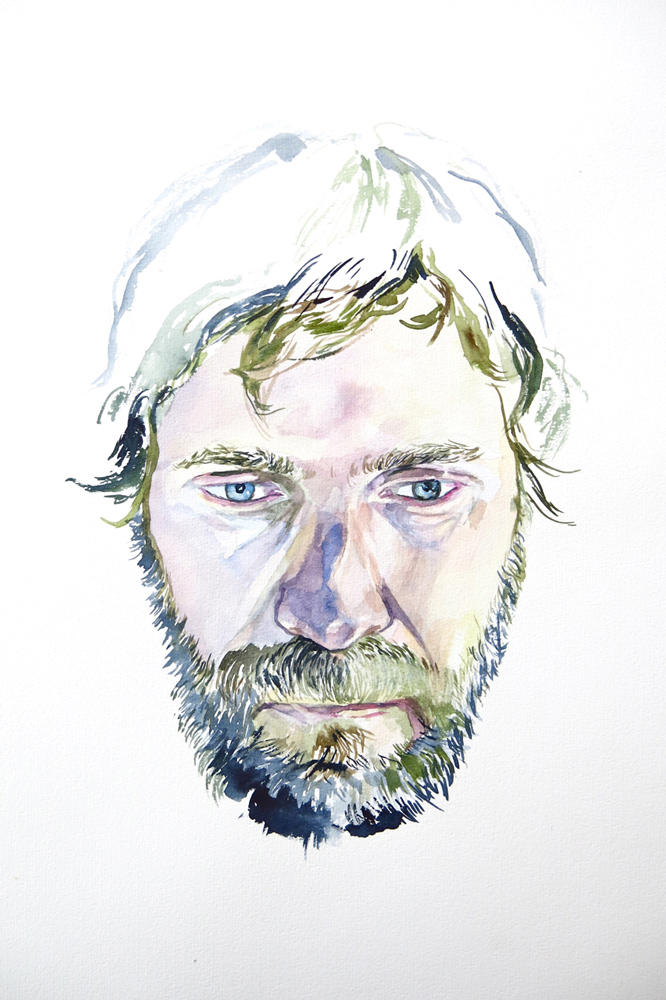In an essay about the Common Heath, John Ruskin laments that it is “difficult to draw them in any approximation to the truth before they change.” Here, instability or fickleness is attributed to the subject of the drawings. With watercolor, the medium is itself the Heath; with its own temporality, watercolor and I will often miss each other. This gives way to the rather melancholic art of trying to anticipate the trickster by becoming one yourself, an apprenticeship that will always fall short, because the Heath will lean in and out of weather, shift in shadow, show susurration. To meet this sentience on its terms a purely (or, what I sense to be a purely) somatic reflex kicks in, and provides intellection otherwise than thought. I am impatient. Hurrying, I learn to slow down. Time passes. How to live with oneself? Even if this involves dejection and failure, in watercolor, it seems second nature. And at the end of my brief labors I am delighted to find there an image, irreducible to fact. A floating face! Ever changing, like the Heath, my husband.
[scroll left to right]
